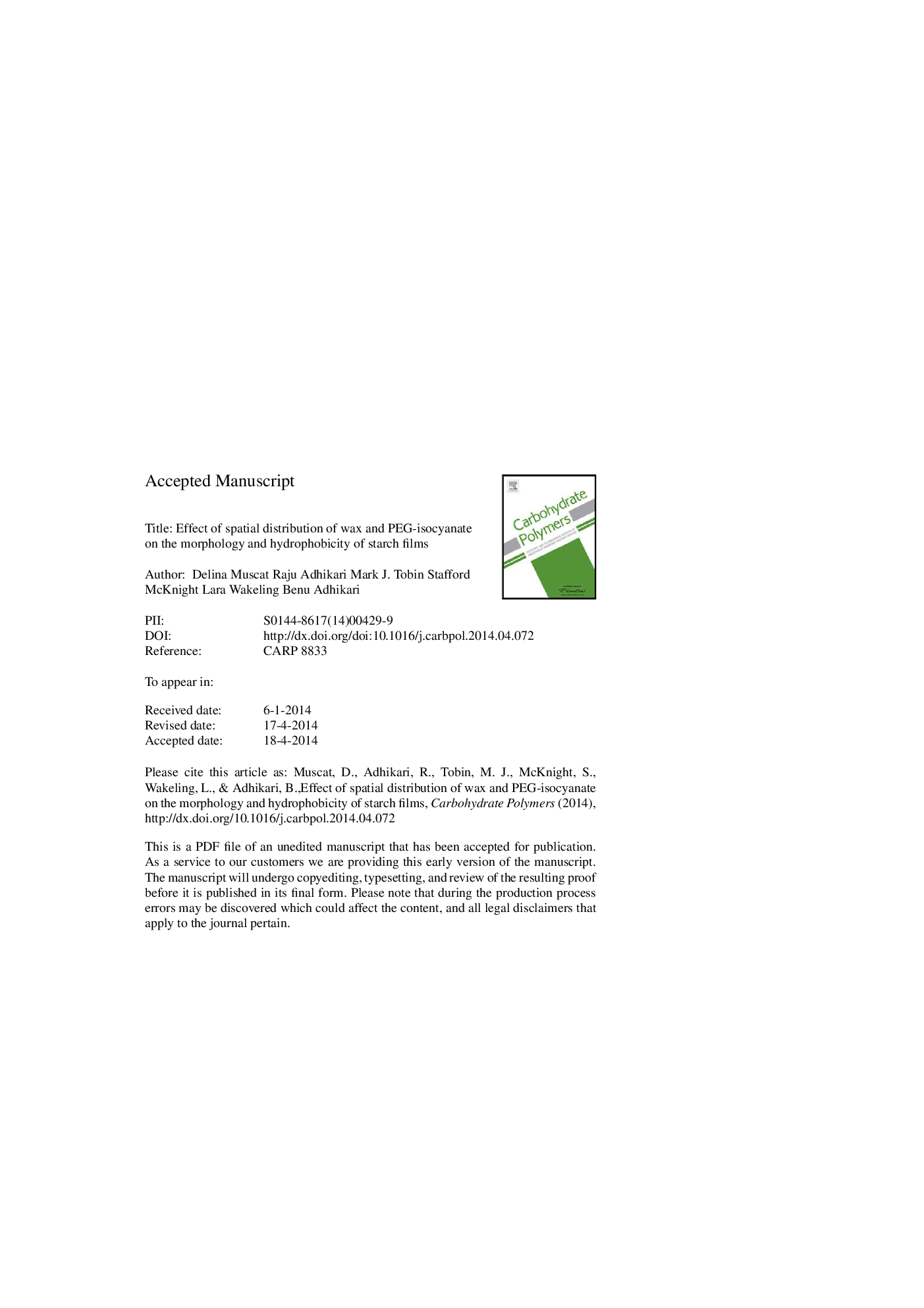| Article ID | Journal | Published Year | Pages | File Type |
|---|---|---|---|---|
| 7791515 | Carbohydrate Polymers | 2014 | 39 Pages |
Abstract
This study proposes a novel method for improving surface hydrophobicity of glycerol plasticized high amylose (HAG) films. We used polyethylene glycol isocyanate (PEG-iso) crosslinker to link HAG and three natural waxes (beeswax, candelilla wax and carnauba wax) to produce HAG + wax + PEG-iso films. The spatial distributions of wax and PEG-iso across the thickness of these films were determined using Synchrotron-based Fourier transform infrared spectroscopy. The hydrophobicity and surface morphology of the films were determined using contact angle (CA) and scanning electron microscopic measurements, respectively. The distribution patterns of wax and the PEG-iso across the thickness of the film, and the nature of crystalline patterns formed on the surface of these films were found to be the key factors affecting surface hydrophobicity. The highest hydrophobicity (CA >90°) was created when the PEG-iso was primarily distributed in the interior of the films and a hierarchical circular pinnacle structure of solidified wax was formed on the surface.
Related Topics
Physical Sciences and Engineering
Chemistry
Organic Chemistry
Authors
Delina Muscat, Raju Adhikari, Mark J. Tobin, Stafford McKnight, Lara Wakeling, Benu Adhikari,
